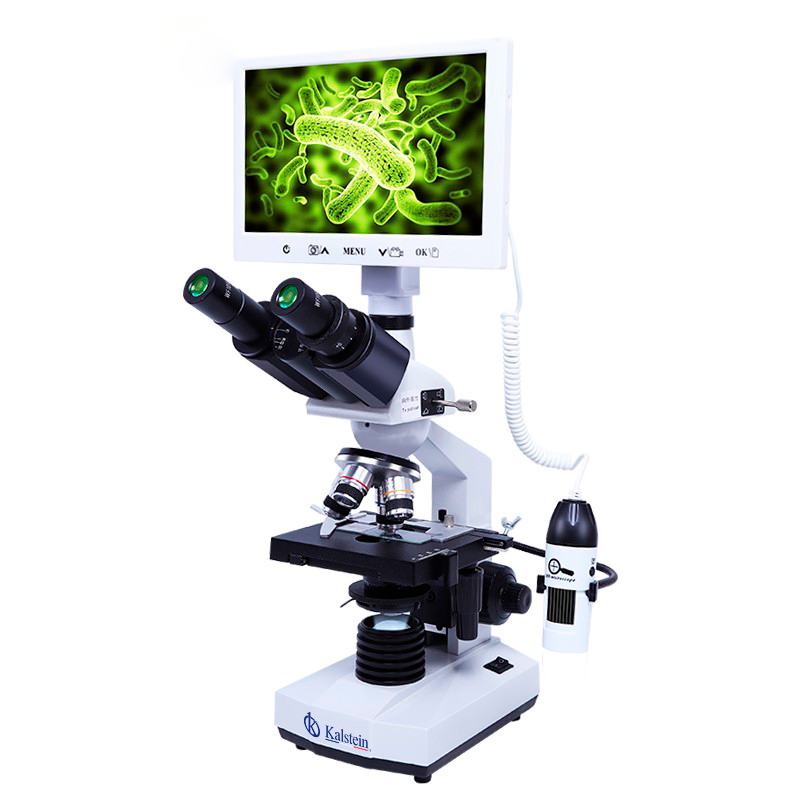The greatest advance in the scientific world came with the arrival of the optical microscope, which is nothing more than an instrument that makes it possible to observe microscopic objects, that is, they cannot be seen with the naked eye by the human eye, this function is thanks to the fact that it has an optical system formed by lenses that increase the image that the user is viewing.
The basis of these equipment is the presence of lenses that change the direction of the light rays, such as converging or diverging, which can produce augmented images. Another fundamental element, without which they could not work, is light, that is why optical microscopes come equipped with a light bulb or lamp at the bottom. There are several types of microscopes, including the compound, which we will discuss below.
Composite microscopes
They are a type of optical microscope that fulfills the function of any such equipment, to create an enlarged image of a sample, the difference of these, in relation to simple microscopes, is that they have more than one lens. In fact, compound microscopes can greatly enlarge an image, usually up to about 1,000 times.
They are used to evaluate samples that cannot be seen with the naked eye, such as cells, tissues from animals and plants, bacteria, and other microscopic organisms. There is a special type of compound microscopes, these are known as binocular magnifying glasses and are used to observe details of macroscopic organisms, since they can enlarge only up to 40 times. Optical microscopes are useful in many fields, such as biology or medicine, among others. Some of its uses include:
- In bioassays, for blood, feces or urine.
- In biology, to study various microscopic living things such as viruses, bacteria, zooplankton, phytoplankton, among others.
- In histology, to look at tissue.
Optical Composite Microscope System
The optical system is responsible for producing the composite microscope magnified image, which consists of two connected lens systems. Such systems are the targets and eyepieces. The image first reaches the target, then it projects it to the eyepiece, who then enlarge it, through the latter it is possible to see the image:
- Objectives: They are located in a rotating piece known as a lens revolver. There are several magnifications, the most common are 4X, 10X, 20X, 40X and 60X, there are microscopes with 100X magnification lenses, these are known as immersion lenses and need a special liquid to use. The lenses must be aligned with the eyepiece to work.
- Ocular: located at the top of the microscope, this is where the eye approaches for observation. They are characterized by their cylindrical shape and by being formed by several coaxial lenses. Just as lenses, eyepiece lenses also have magnification, usually can be 5X, 10X or 15X, they also exist 2X but are less common.
In many works it is necessary to report the increase to which a given sample was observed, for this reason, it is very important that the equipment has marked that value. To calculate the increase at which a sample is being displayed, simply multiply the target you worked on by the increase of the eyepiece, for example, if you used the 100X target and the eyepiece is 15X, the total value is an increase of 1500 times or 1500X.
Kalstein branded composite microscopes
If you want to purchase a composite microscope, Kalstein is a manufacturer of these and many other laboratory and clinical equipment. Our models have the best PRICES in the market and also have a high technology and quality. Within our microscope models you can find the YR series with a high transmission optical system, with a combined base and arm design and a wide range of accessories that make it an ideal instrument for biology, bacteriology, histology, immunology and pharmacology.
When you make your PURCHASE with us, we assure you that you will be advised at all times so that you can choose the model that best fits what you are looking for. If you would like to review our microscope catalog, please visit HERE

